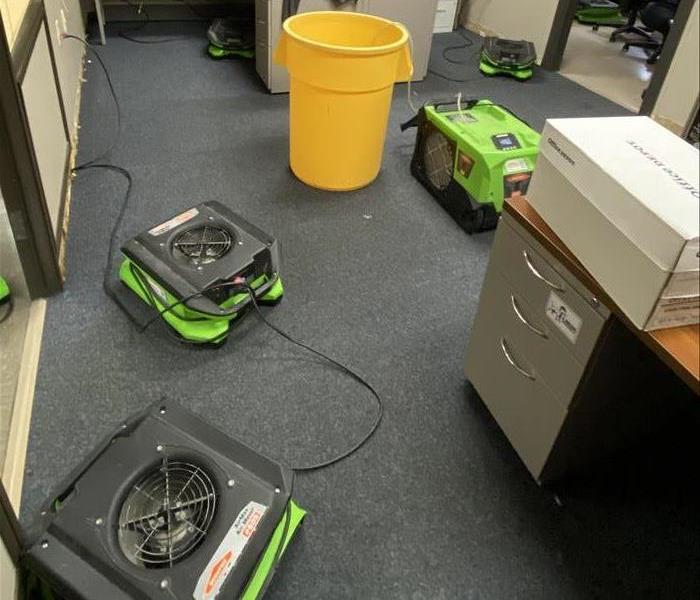Unmasking Mold: How to Recognize Signs of Mold in Your Home
11/25/2023 (Permalink)
Mold, a common household intruder, can often remain hidden from plain sight, silently affecting your health and your home's integrity. Recognizing the signs of mold is the first step in addressing this issue effectively. In this blog post, SERVPRO shines a light on how to recognize the subtle and not-so-subtle signs of mold in your home.
1. Visual Clues:
The most apparent signs of mold are often visual in nature. Keep an eye out for:
- Discoloration: Mold can appear in various colors, including black, green, brown, white, or gray. It may present as splotches, streaks, or patches on walls, ceilings, or surfaces.
- Fuzzy or Powdery Texture: Mold often has a fuzzy or powdery appearance, especially on damp materials or in humid conditions.
- Stains and Water Damage: Stains, discoloration, or signs of water damage on walls, ceilings, or floors can be indicative of an underlying mold issue.
- Peeling Paint or Wallpaper: Mold can cause paint or wallpaper to peel or bubble, as it grows behind these materials.
2. Musty Odors:
Mold is known for emitting a distinctive, musty odor that can linger in your home. If you notice persistent, earthy, or unpleasant odors, especially in specific areas of your home, it may be a sign of hidden mold growth.
3. Allergic Reactions:
Mold spores can trigger allergic reactions in some individuals. If you or your family members experience unexplained symptoms such as sneezing, coughing, nasal congestion, eye irritation, or skin rashes that worsen when at home but improve when away, it could be due to mold exposure.
4. Health Symptoms:
Prolonged exposure to mold can lead to a range of health issues, including respiratory problems, headaches, fatigue, and more severe conditions in sensitive individuals. If you or your family members experience unexplained or worsening health symptoms while at home, consider the possibility of mold as a contributing factor.
5. Water Intrusion History:
If your home has a history of water leaks, flooding, or excessive moisture, it becomes more susceptible to mold growth. Even if you've addressed past water issues, residual moisture can create an environment conducive to mold development.
6. Hidden Areas:
Mold often thrives in hidden or less frequently visited areas, such as:
- Behind Walls: Mold can grow within wall cavities, particularly if there has been water damage or high humidity.
- Under Flooring: Mold can lurk beneath carpets, tiles, or wooden flooring.
- In Basements and Crawlspaces: These areas are prone to moisture issues, making them prime locations for mold growth.
7. Stale or Damp Air:
A home with poor ventilation or high humidity levels can provide an ideal breeding ground for mold. If you notice that the air in your home feels damp, stale, or excessively humid, it may promote mold growth.
Recognizing the signs of mold is crucial for addressing the issue promptly and effectively. If you suspect mold in your home, it's essential to seek professional assistance from SERVPRO. Our experienced technicians have the expertise and equipment to locate, assess, and safely remediate mold infestations, ensuring a safe and healthy living environment for you and your family. Your health and well-being are our top priorities, and we're here to support you every step of the way.





 24/7 Emergency Service
24/7 Emergency Service
